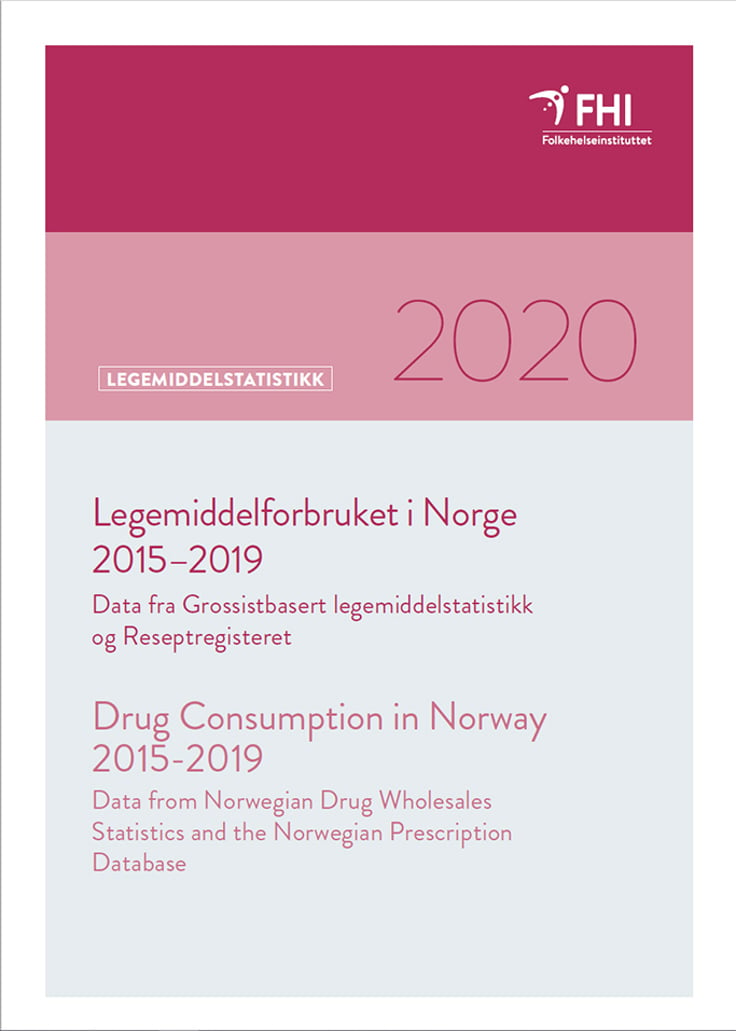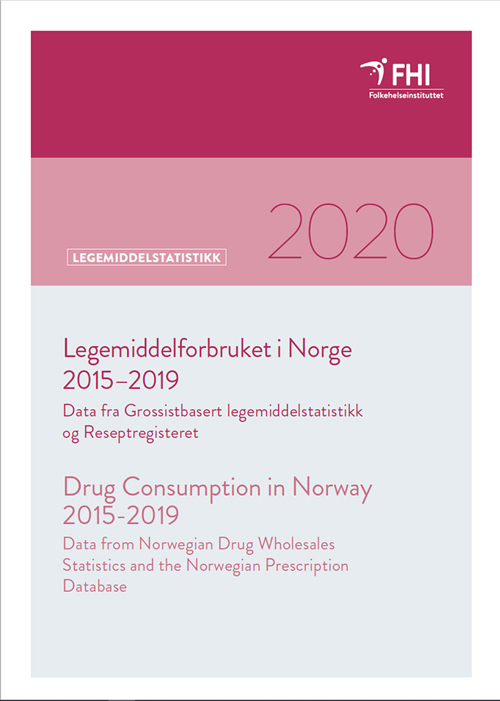Drug Consumption in Norway 2015-2019: Data from Norwegian Drug Wholesales Statistics and the Norwegian Prescription Database
Report
|Published
|The figures presented in the report are based on Wholesale Drug Statistics and the Prescription Database. Overall, they provide a more complementary picture of Norwegian drug consumption.
Summary
This year’s report Drug consumption in Norway includes data and information from two sources, Norwegian Drug Wholesales Statistics and the Norwegian Prescription Database (NorPD), for the period 2015-2019. Together, these sources provide a complementary picture of drug sales and consumption in Norway.
Norwegian Drug Wholesales Statistics
- In 2019, drugs for human use were sold for a total of NOK 19.7 thousand million (pharmacy
purchase price (AIP)), an increase of 3.3% from the previous year (Table 3.1). In addition, the
sales of veterinary medicines were NOK 1.3 thousand million. Over time, there has been a steady
increase in sales measured in defined daily doses (DDD). In 2019, the number of DDDs was 2.6%
higher than the previous year. Over time, the increase in cost has been higher than the increase in volume, measured in DDD. The sale includes medicines with and without Marketing Authorization in Norway. Non-prescription drugs accounted for around 10% of total sales measured in DDD. - Figure 3.1 shows the development in total sales of drugs for human use in the period 2000 to 2019 in NOK (AIP) and DDD. Increased prices as well as the use of more expensive drugs have affected cost increases. Costs will also be affected by exchange rates. Population growth and an increased proportion of older people contribute to increased drug consumption.
- Antineoplastic and immunomodulatory agents (ATC group L), had the highest turnover in NOK and accounted for 25% of costs for human medicines in 2019 (Table 3.1). The group includes expensive drugs for the treatment of cancer as well as biological drugs for the treatment of, for example, arthritis and multiple sclerosis.
Norwegian Prescription Database (NorPD)
- Since the Norwegian Prescription Register was established in 2004, almost 6 million have been included. The number of drugs dispensed according to prescription during this period is just below 679 million.
- About 97% of the medicines in the NorPD (measured in DDD) were dispensed to individuals in 2019. Of the Norwegian population, 71% were dispensed at least one drug in 2019, 78% of the women and 65% of the men (Table 3.4.1). The proportion (prevalence) was lowest in the age group 5–9 years for both genders and increases with age. In people over the age of 70, more than 90% of the individuals were given a prescription drug (figure 3.4.1).
- The three drug groups most commonly used by both genders are antiinfectives for systemic use (ATC group J), agents acting on the nervous system (ATC group N), and agents acting on the respiratory system (ATC group R). Table 3.4.2 shows prevalence for each of the 14 ATC main groups; total and among women and men.
The main tables in Part 4 contain data from both data sources. Data from NorPD include medicines on prescription to individuals indicated as number and proportion of users. The Norwegian Drug Wholesales Statistics also includes sales to hospitals, other health institutions and non-pharmacy outlets, mainly listed as DDD/1000 inhabitants/day. Not all medicines have an assigned DDD, here only data from NorPD is included with number and proportion of users.

